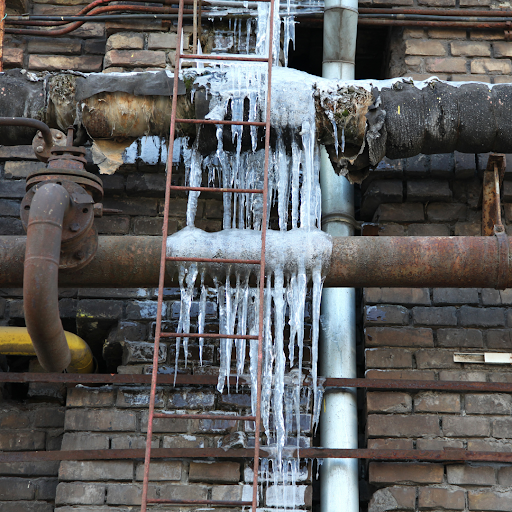Prevent Frozen Pipes in Winter: Pro Tips
Prevent Frozen Pipes in Winter: Pro Tips
Blog Article
We've discovered the article about How To Avoid Freezing Pipes listed below on the internet and concluded it made sense to relate it with you in this article.

Cold weather can damage your plumbing, especially by freezing pipelines. Below's how to stop it from occurring and what to do if it does.
Intro
As temperature levels drop, the risk of icy pipes rises, potentially causing costly fixings and water damages. Comprehending how to stop icy pipes is essential for homeowners in cool climates.
Avoidance Tips
Protecting vulnerable pipes
Cover pipelines in insulation sleeves or make use of warmth tape to protect them from freezing temperatures. Concentrate on pipelines in unheated or outside areas of the home.
Heating techniques
Maintain indoor areas effectively heated up, especially locations with pipes. Open closet doors to permit warm air to flow around pipelines under sinks.
How to recognize frozen pipelines
Try to find decreased water circulation from faucets, uncommon smells or sounds from pipelines, and noticeable frost on revealed pipes.
Long-Term Solutions
Structural modifications
Think about rerouting pipes far from exterior walls or unheated areas. Include added insulation to attics, basements, and crawl spaces.
Upgrading insulation
Invest in high-quality insulation for pipes, attics, and walls. Appropriate insulation helps maintain constant temperatures and lowers the threat of frozen pipes.
Securing Outdoor Pipes
Garden pipes and outside faucets
Detach and drain pipes yard hoses prior to winter. Mount frost-proof faucets or cover outside faucets with shielded caps.
Recognizing Frozen Pipelines
What creates pipes to ice up?
Pipes ice up when subjected to temperatures listed below 32 ° F (0 ° C) for extended durations. As water inside the pipes ices up, it expands, putting pressure on the pipeline walls and possibly triggering them to rupture.
Risks and damages
Icy pipes can lead to water disturbances, property damage, and expensive repair work. Burst pipelines can flooding homes and create considerable structural damage.
Indicators of Frozen Water Lines
Determining icy pipes early can avoid them from bursting.
What to Do If Your Pipelines Freeze
Immediate actions to take
If you presume frozen pipelines, keep faucets open up to ease pressure as the ice melts. Make use of a hairdryer or towels taken in hot water to thaw pipelines gradually.
Conclusion
Avoiding icy pipes requires aggressive steps and fast actions. By understanding the reasons, signs, and safety nets, property owners can shield their plumbing throughout winter.
5 Ways to Prevent Frozen Pipes
Drain Outdoor Faucets and Disconnect Hoses
First, close the shut-off valve that controls the flow of water in the pipe to your outdoor faucet. Then, head outside to disconnect and drain your hose and open the outdoor faucet to allow the water to completely drain out of the line. Turn off the faucet when done. Finally, head back to the shut-off valve and drain the remaining water inside the pipe into a bucket or container. Additionally, if you have a home irrigation system, you should consider hiring an expert to clear the system of water each year.
Insulate Pipes
One of the best and most cost-effective methods for preventing frozen water pipes is to wrap your pipes with insulation. This is especially important for areas in your home that aren’t exposed to heat, such as an attic. We suggest using foam sleeves, which can typically be found at your local hardware store.
Keep Heat Running at 65
Your pipes are located inside your walls, and the temperature there is much colder than the rest of the house. To prevent your pipes from freezing, The Insurance Information Institute suggests that you keep your home heated to at least 65 degrees, even when traveling. You may want to invest in smart devices that can keep an eye on the temperature in your home while you’re away.
Leave Water Dripping
Moving water — even a small trickle — can prevent ice from forming inside your pipes. When freezing temps are imminent, start a drip of water from all faucets that serve exposed pipes. Leaving a few faucets running will also help relieve pressure inside the pipes and help prevent a rupture if the water inside freezes.
Open Cupboard Doors
Warm your kitchen and bathroom pipes by opening cupboards and vanities. You should also leave your interior doors ajar to help warm air circulate evenly throughout your home.

I'm very excited about How To Avoid Freezing Pipes and I am assuming you liked my blog post. Appreciated our entry? Please share it. Help someone else locate it. Thanks for your time. Don't forget to pay a visit to our blog back soon.
Visit Link Report this page